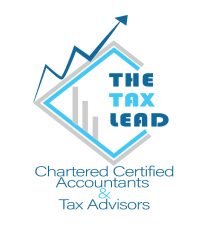Starting your own business can be an exciting and rewarding venture, but it’s important to choose the right business structure to fit your needs. One of the most common legal forms of business is sole trading or self-employment. In this blog, we will explore the essentials in relation to Sole trading/self-employment, helping you make an informed decision about which path is best for your entrepreneurial journey.
What is Sole Trading…
Sole trading, often referred to as sole proprietorship, is a straightforward and easily accessible business structure. In a sole trading business, an individual operates a business in their own name and is the sole owner. This means that you, as the business owner, are personally responsible for all aspects of the business, including its debts, profits, and day-to-day operations.
Essentials of Sole trading…
Naming your business: You can trade under your own name, or you can choose another name for your business. You do not need to register your name. Sole trading names must not include limited, Ltd or Limited Liability Partnership (LLP) or Public Limited Company (PLC).
You must include your name and business name (if you have one) on official paperwork, for example invoices and letters.
Opening bank account: You normally need a separate bank account for your business to accept revenue from customers or clients or to make payments to your suppliers or vendors. We would expect the bank to ask you for your ID, proof of address and UTR (unique tax reference) for number to open a bank account.
There are different types of banking facilities including the high street banks as well as online banks such as Mettle, Revolute etc.
Insurance: you may need different insurances depending on nature of your business. Insurances include public liability insurance, professional indemnity insurance, employer liability insurance etc.
Please note that having some of these insurances such as employer liability insurance if you have employees, are a legal requirement. You must have it, if not, you will be personally exposing yourself to huge liability or will be subject to legal action.
Information Commissioner’s Office (ICO): You may need to get register with ICO and pay a protection fee if you are dealing with personal data. There are number of exemptions available, please check their website, https://ico.org.uk/.
Registration with HMRC: You need to set up a sole trader and get registered for self-assessment if any of the following apply:
- You earned more than £1,000 from self-employment during a tax year (e.g., 6th April 2022 to 5th April 2023).
- you need to prove you’re self-employed, for example to open a bank account, claim Tax-Free Childcare
- you want to make voluntary Class 2 National Insurance payments to help you qualify for benefits
You must register for Self-Assessment by 5th October if you need to complete a self-assessment tax returns and have not sent one before. You could be fined if you do not.
Once you make the application for self-assessment, you will be assigned a unique tax reference (UTR) number.
Filing Self-Assessment: you must file a self-assessment tax return (online) by 31st January following the end of relevant tax year. You can choose your accounting date and financial year as you wish.
Tax payments: You must make tax payment by 31st January following the end of relevant tax year. If your liability is more than £1,000 for the tax year, you will have to pay tax in advance known as “payment on account (POA)” for next tax year. HMRC will collect POA in two instalments (50% tax on each instalment based on last year’s tax liability):
- 1st POA – 31 January along with last tax year’s tax.
- 2nd POA – 31 July following the relevant tax year.
VAT: You must register for VAT if your turnover is over £85,000. You can register voluntarily if it suits your business, for example if you sell to other VAT-registered businesses and want to reclaim the VAT.
Filing and payment deadline: The deadline for submitting VAT returns online is usually one calendar month and 7 days after the end of an accounting period (quarter end or month end). This is also the deadline for paying HMRC.
PAYE: You normally need to register as an employer with HMRC when you start employing staff or using subconstruct ion for construction work.
Filing and payment deadline: You need to use a payroll software to send a Full Payment Submission (FPS) to tell HM Revenue and Customs (HMRC) about payments to your employees and what deductions to their pay you’ve made. You must send the FPS on or before your employees’ payday, even if you pay HMRC quarterly instead of monthly.
Monthly payments are due by the 22nd of the following tax month or by the 19th if you pay by post, while quarterly payments are due on the 22nd after the end of the quarter.
In conclusion, the above are the very essentials on basic level. Depending on nature of your business, location, customer location, you will have to comply with other essentials such as construction industry scheme (CIS), IR35, Customs clearance etc. Should you require any assistance in setting up your sole trader business or to understand different requirements, please book an appointment for a free initial consultation.
